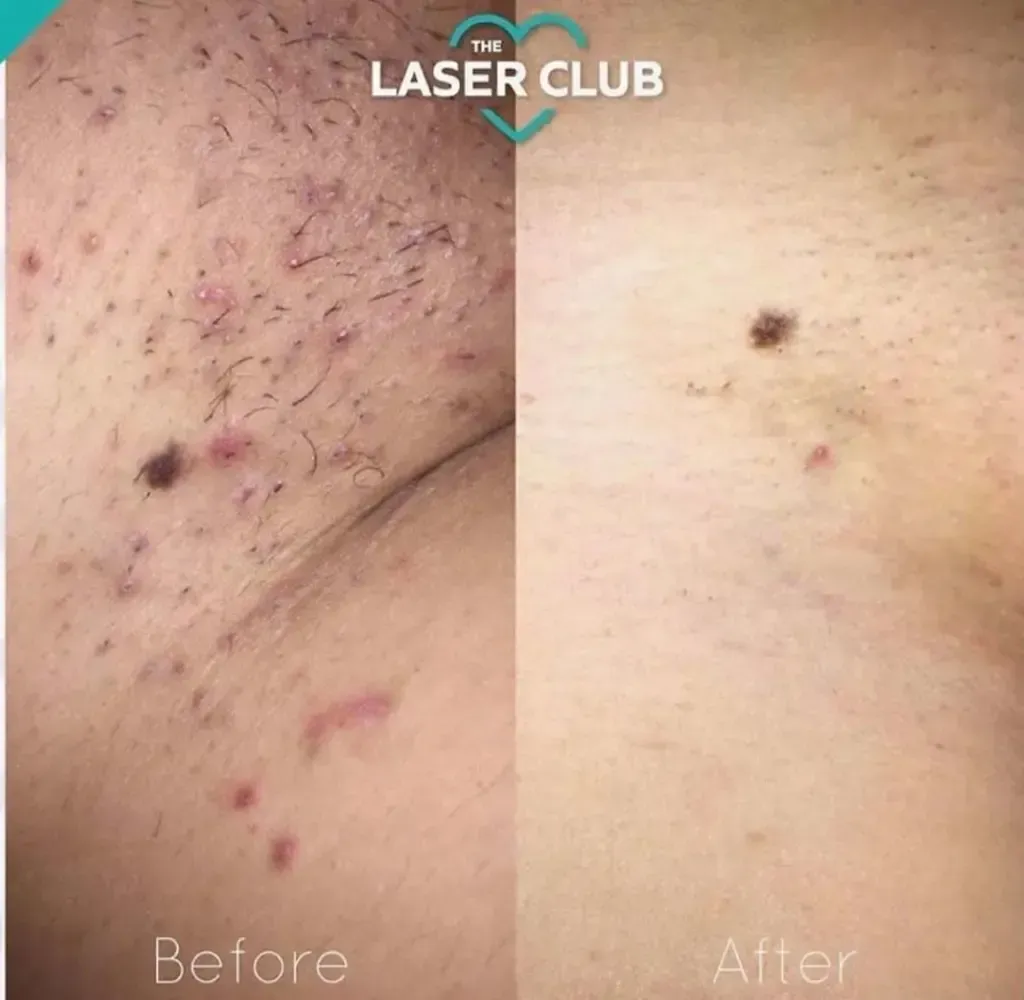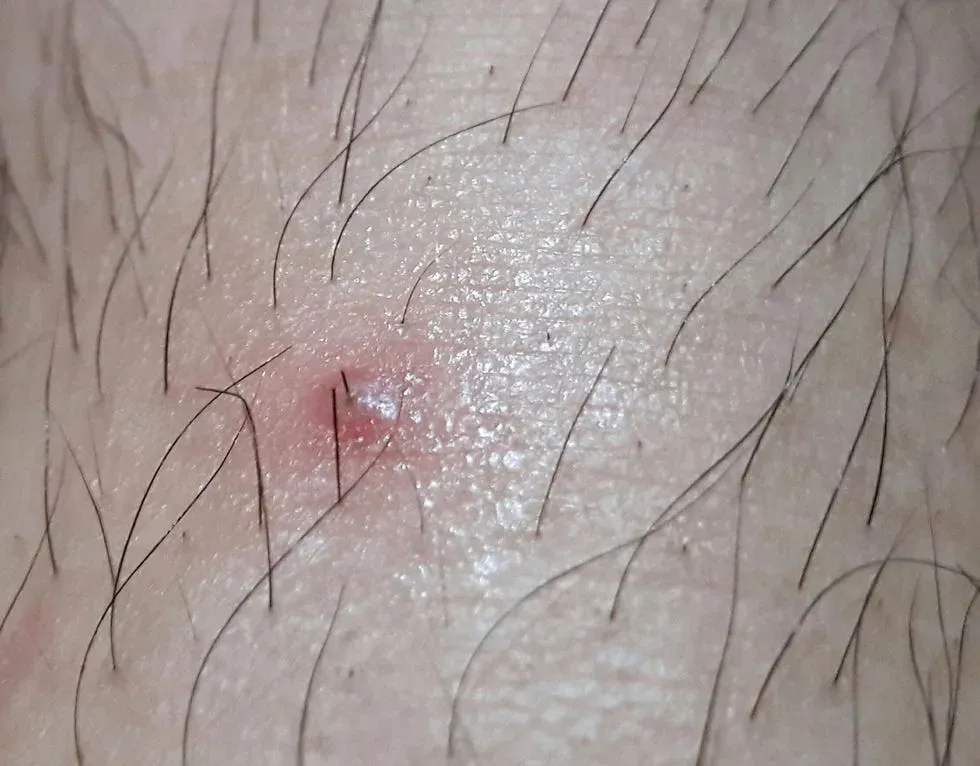Table of Contents
Alright, let's be honest. Nobody enjoys the unwelcome surprise of an ingrown hair. That little red bump, sometimes painful, sometimes just a stubborn annoyance, is enough to make you reconsider every hair removal method you've ever used. You've probably poked at it, maybe even tried to tweeze it out prematurely (don't deny it), and just wished it would vanish into thin air. Because when you have an ingrown hair, you don't want a lecture on skin anatomy; you want it gone, preferably yesterday. That's where the need for fast ingrown hair removal comes in.
What Exactly Are Ingrown Hairs and Why Do They Cause Trouble?

What Exactly Are Ingrown Hairs and Why Do They Cause Trouble?
So, what exactly is an ingrown hair? Think of it like a tiny, misguided missile. Instead of growing straight up and out of the follicle like a good citizen, the hair shaft curls back and re-enters the skin. Or sometimes, it just never makes it out in the first place, getting trapped under the surface. This little rebellion usually happens after you've removed hair, whether by shaving, waxing, or plucking. The new hair is often sharper or weaker, and the skin might grow over the follicle opening, trapping the hair inside. Your body sees this trapped hair as a foreign invader, like a splinter, and throws an inflammatory party to deal with it. That's why you get the classic red, raised bump that can be tender or even painful. Sometimes there's a little pus involved, making it look like a zit, which is just adding insult to injury. These things are annoying, uncomfortable, and frankly, a pain to deal with, especially when you want them gone quickly.
Where do these rebels typically show up?
- Beard area (for guys)
- Legs
- Bikini line
- Armpits
- Neck
Why You Need Fast Ingrown Hair Removal Now

Why You Need Fast Ingrown Hair Removal Now
Why Waiting It Out Just Doesn't Cut It
Now that we know what these little rebels are, let's talk about why you absolutely don't want them sticking around any longer than necessary. That red bump isn't just an eyesore; it's a signal that something isn't right under your skin. Leaving an ingrown hair to its own devices might eventually resolve on its own, sure, but that can take days, sometimes weeks. During that time, you're dealing with discomfort, potential pain, and the risk of that inflamed area getting infected. A simple ingrown can turn into a painful pustule or even a cyst if ignored. Plus, let's be real, who wants to wear shorts or a swimsuit with visible bumps? The desire for fast ingrown hair removal isn't just about vanity; it's about avoiding unnecessary pain, potential scarring, and the general annoyance that comes with these persistent little problems.
Why the rush?
- They can hurt!
- Risk of infection increases over time.
- They look unsightly.
- They can itch like crazy.
- Nobody has time for unnecessary discomfort.
Proven Methods for Fast Ingrown Hair Removal at Home

Proven Methods for Fast Ingrown Hair Removal at Home
Start with Gentle Exfoliation and Heat
you've spotted the offender. The first step for fast ingrown hair removal at home isn't to grab the sharpest thing you own. Resist the urge to become an amateur surgeon. What you need to do is coax that hair to the surface. Think of it like negotiation, not an ambush. Start with gentle exfoliation. This helps remove the layer of dead skin cells that might be trapping the hair. You can use a soft brush, a loofah, or a gentle scrub. Don't go at it like you're trying to remove rust; be kind to your skin. Follow this up with a warm compress. Soak a clean washcloth in warm water, wring it out, and hold it against the ingrown hair for a few minutes. The heat can help open up the pore and soften the skin, making it easier for the hair to pop out or become visible.
Simple Steps for Initial Treatment:
- Gently exfoliate the area with a soft brush or scrub.
- Apply a warm, clean washcloth for 5-10 minutes.
- Repeat the warm compress several times a day.
Carefully Free the Trapped Hair
After you've softened the skin and hopefully brought the hair closer to the surface, you might be able to see the loop of the hair under the skin or even the tip sticking out. This is when you can *carefully* intervene. You will need sterile tweezers or a sterile needle. And by sterile, I mean cleaned with rubbing alcohol. Do not use the dirty tweezers you left on the bathroom counter. If you can see the hair loop, gently try to tease it out with the tip of the tweezers or needle. Slide the tip under the loop and lift it gently. The goal is just to free the tip of the hair so it can grow outwards, not to yank the hair out entirely (though sometimes it comes with minimal effort once freed). Do not dig into your skin if you can't easily reach the hair. Seriously, don't poke around blindly; you'll just cause more inflammation and potential infection, setting back your fast ingrown hair removal efforts significantly.
Once the hair is free, clean the area with antiseptic. Keep it clean and moisturized. Sometimes, freeing the hair is all it takes, and the bump will start to go down on its own. If the ingrown hair looks infected (lots of redness, swelling, pus), this home intervention might not be the best idea, and you might need something stronger.
When DIY Isn't Enough: Professional Solutions for Fast Ingrown Hair Removal

When DIY Isn't Enough: Professional Solutions for Fast Ingrown Hair Removal
so you've tried the warm compresses, the gentle exfoliation, maybe even attempted the sterile tweezer maneuver with the focus of a brain surgeon, and that stubborn ingrown hair is still giving you grief. Or worse, it looks angry, red, and maybe even feels hot and painful. This is the point where you need to stop playing doctor in your bathroom and consider professional help. Sometimes, a deeply embedded hair or an infected follicle is just beyond the scope of home remedies. Trying to force it out can lead to scarring or spread the infection. When your DIY efforts aren't yielding results, or the situation is escalating, seeking professional solutions is the smart play for genuinely fast ingrown hair removal and preventing long-term damage.
Stopping Ingrown Hairs Before They Start: Prevention is Key

Stopping Ingrown Hairs Before They Start: Prevention is Key
Prep Your Skin Like You Mean It
so you've dealt with the current ingrown hair crisis. High fives all around. But let's be real: the best fast ingrown hair removal strategy is not needing fast ingrown hair removal in the first place. Prevention is where the real victory lies. Think of it like fixing a leaky faucet versus never letting it start leaking. The first step is getting your skin ready *before* you even think about removing hair. This means exfoliating regularly, not just when a bump appears. Use a physical exfoliant like a scrub or brush a couple of times a week, especially in areas prone to ingrowns. This keeps that top layer of dead skin cells from building up and blocking the follicle opening. Also, make sure your skin is clean and warm before you start. A warm shower or bath opens up the pores and softens the hair, making it easier to remove cleanly.
Master Your Hair Removal Technique
How you remove hair makes a massive difference in whether you'll end up with ingrowns. If you shave, always use a sharp, clean razor. Dull blades drag and pull, increasing the chance of hair getting trapped. Shave in the direction the hair grows, not against it. It might not give you that baby-smooth feel initially, but it drastically reduces irritation and the likelihood of the hair curling back into the skin. Rinse your blade often. If you wax, ensure the hair is long enough for the wax to grip properly, and pull the strip off quickly and parallel to the skin. Slow, hesitant pulls are a recipe for broken hairs and ingrowns. And for goodness sake, don't go over the same spot repeatedly.
- Always use a sharp razor when shaving.
- Shave in the direction of hair growth.
- Exfoliate regularly (2-3 times a week).
- Cleanse skin before hair removal.
- Use a moisturizing shaving cream or gel.
- Change razor blades often.
Post-Removal Care and Long-Term Solutions
You've successfully removed the hair. Now what? The aftercare is just as crucial as the prep. Immediately after shaving or waxing, rinse the area with cool water to close the pores. Apply a soothing, alcohol-free lotion or serum. Look for ingredients like aloe vera or witch hazel, which can reduce inflammation. Avoid tight clothing right after hair removal, as friction can irritate the follicles. For those who battle persistent ingrown hairs, consider looking into longer-term solutions. Methods like laser hair removal, offered at places like hairawaybylaser.com, target the follicle itself, significantly reducing hair growth over time and thus drastically lowering the chances of ingrown hairs forming. It's less about managing the problem after it happens and more about preventing the conditions that cause it in the first place.
Putting Ingrown Hairs Behind You
So, there you have it. Those annoying ingrown hairs aren't an inevitable curse, and you don't have to suffer through them for weeks. By understanding what causes them and employing the right techniques, you can achieve fast ingrown hair removal and get back to feeling comfortable in your own skin. Whether it's a simple warm compress at home or seeking professional help for stubborn cases, taking action is key. More importantly, adopting smart prevention strategies means you'll encounter these bumps far less often. Smooth sailing (or skinning) is within reach.
